Electric and Autonomous Vehicles Transform the Aerospace and Defense Industry

In this blog, Keysight would talk about the Electric and Autonomous Vehicles Transform the Aerospace and Defense Industry. The test and measurement industry must enable further advancements to fully recognize the benefits of this transformation.
Evolving geopolitical realities continue to redefine modern warfare. Historical models with clear lines of delineation have morphed into the boundary-less and often asymmetric conflict exemplified in Figure 1. This new paradigm places high value on force agility, sometimes requiring deployments to distant locales at a moment’s notice. The growing value of operating covertly and projecting force from afar is influencing military modernization plans. Logistics supply chains must also evolve, as militaries recognize that today’s unwieldy fossil-fuel-driven footprints pose a serious vulnerability.
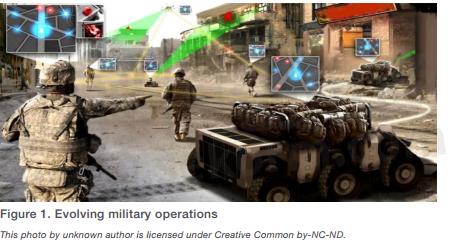
Defense organizations look to electric and autonomous vehicles as one means of addressing these new challenges. Electric-powered ground, airborne, and marine vehicles offer many advantages, allowing militaries to lessen their reliance on fossil fuels while enhancing mobility and covertness. Advancements in autonomous vehicle technologies allow force projection from greater distances without placing warfighters in harm’s way.
Along with these evolutions in modern warfare is increasing societal pressure to address the impacts of climate change, such as those shown in Figure 2. World governments predict these pressures will build as floods, wildfires, and heatwaves, like the ones which occurred in Europe and the United States in 2021, become more commonplace.

As governments search for solutions, they increasingly welcome large-scale initiatives aimed at reducing global carbon emissions. The private industry recognizes the societal benefits and commercial opportunities this transition will bring.
Substantial investment in electric vehicle (EV) technologies has driven significant advancements over the past decade. Autonomous vehicle technologies evolve at a similarly rapid pace, and the newest hybrid or fully electric passenger vehicles offer driver-assistance or other autonomy-related capabilities. Lagging development of an expansive energy supply infrastructure, analogous to that in place for internal combustion engine vehicles, may soon benefit from smart grid designs that maximize energy storage and distribution efficiencies. Plans for electric-powered autonomous aircraft use many of these same technologies and support a longer-term goal of sustainable aviation systems less reliant on fossil fuels.
This shift toward agile and sustainable militaries and highly efficient transportation systems will benefit individuals and society overall. The aerospace and defense community sees these technologies as offering myriad possibilities and is investing to bring them to fruition. Realizing the desired benefits in the aerospace and defense realm, however, requires further technological advancements.
Industry Goals and Benefits of Electrification
Less reliance on fossil fuels is just one objective of electrification in the aerospace and defense industry. Electrification also brings a wealth of other advantages.
Commercial aerospace
To succeed in the commercial aerospace market, companies must design and build aircraft that meet customer expectations for efficiency, performance, and safety. Companies also face pressure from private citizens and governments to reduce aircraft noise and greenhouse gas emissions.
In response, the industry invested in new engine designs and other aircraft improvements. Despite those efforts, noise remains the most significant cause of adverse community reaction to the operation and expansion of airports. Further, while modern aircraft burn less fuel and emit fewer greenhouse gases than their predecessors, growth in air travel has resulted in industry-wide increases in CO2 emissions.
The commercial aerospace industry and many private citizens have long dreamed of aircraft with zero emissions flying in near silence. How many of us can recall watching The Jetsons cartoon on Saturday mornings when we were young? Today’s electric and autonomous vehicle technologies make this dream not so far-fetched, with electric vertical take-off and landing (eVTOL) vehicles, as shown in Figure 3, representing a real-life example.
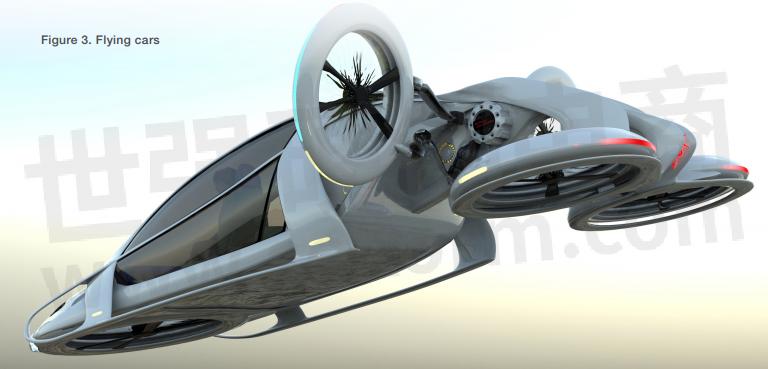
As their name implies, eVTOLs take off and land vertically, a significant advantage when operating in space-constrained settings such as dense urban areas. Their electric propulsion systems help them achieve zero in-flight emissions and significantly quieter operations than traditional aircraft. Multiple rotors controlled by onboard computers provide vertical lift and propulsion, a technique referred to as integrated distributed electric propulsion. This approach provides a high level of safety. Outfitted with autonomous flight control systems, most eVTOLs further enhance safety by reducing the risk associated with human error.
The industry can also realize package delivery systems using electric-powered autonomous drones. Introducing such airborne delivery systems reduces the number of trucks on roadways, thus reducing traffic congestion and pollution. Private industry players recognize the potential of these new technologies and are eager to introduce them.
Defense
Electric and autonomous vehicles offer many benefits for defense organizations. Electrification reduces fossil fuel consumption, lessening supply chain vulnerabilities. Fully electric vehicles tend to have fewer breakable parts demanding available spares, further reducing the pressure on supply chains. Replacing internal combustion engines with high-torque electric motors enhances battlefield mobility and enables silent-watch and silent-run capabilities, improving covertness.
The inherent stealth of autonomous subsurface vehicles with electric propulsion allows them to conduct operations with minimal risk of detection. Militaries can engage adversaries while reducing the risk to warfighters by using ground, airborne, and marine platforms to perform complex missions with little or no human interaction. In addition, platforms with no internal combustion engines have significantly reduced thermal signatures.
The same battery packs that power the increased volume of electronics in today’s military vehicles can act as ancillary power sources for forwarding operating bases and field hospitals. Recognizing the benefits provided, defense organizations around the world are eager to leverage advances in these technologies.
Electrification Initiatives
Electric-powered and autonomous vehicles are improving the efficiency and safety of commercial aerospace and enhancing military operations.
Commercial aerospace
Business strategies of many of today’s most innovative companies rely on the use of electric-powered autonomous vehicles. Amazon’s plan for airborne parcel delivery and developments tied to a broader initiative referred to as urban air mobility (UAM) are examples of this. Both rely on low- or zero-emission aircraft that can operate autonomously.
Amazon is pursuing a last-mile package delivery system using electric-powered autonomous drones. The stated goals of the Prime Air initiative include getting packages to customers in 30 minutes or less while improving the overall safety and efficiency of modern transportation systems. Amazon is considering the use of lightweight solar power and advanced battery technologies to reduce reliance on the existing electric grid and hasten the rollout of this service.
UAM generally refers to urban transportation systems that move people or cargo by air. The US National Aeronautics and Space Administration recently released its latest Vision Concept of Operations for the future of UAM (UAM Maturity Level-4). This document describes “broad operational concepts, high-level functional capabilities, and system requirements to place urban air travel within reach of the general public as a safe, cost-effective, and practical alternative to other modes of transportation.”
The Italian government also has endorsed the adoption of commercial advanced air mobility 1 (AAM) solutions of the type shown in Figure 4. It released a comprehensive plan to introduce a countrywide system that includes eVTOL air taxi operations by 2030. The plan considers potential environmental gains associated with the adoption of AAM and looks to quantify the potential reduction in CO2 emissions. The Italian roadmap will initially consider six use cases: air taxi, medical delivery, goods delivery, inspections, mapping, and agricultural support. Adjacent markets include intercity and subregional air transport and emergency response services.
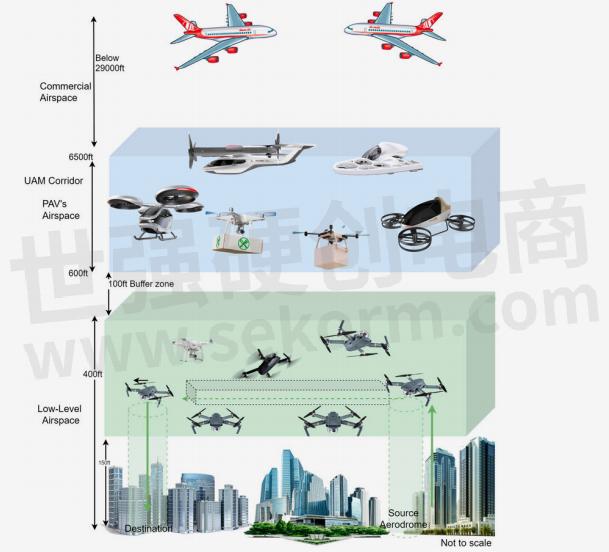
Creating such systems will require a network of launch points, referred to as vertiports. Airborne vehicles would travel between them without running out of power or colliding with other vehicles or infrastructure. Service centers for vehicle maintenance will also be necessary. Leading aerospace manufacturers and commercial airlines are investing heavily in UAM, both organically and via equity stakes in the numerous technology-focused startups racing to develop UAM aircraft. Those aircraft most often are eVTOLs or short take-off and landing vehicles (eSTOLs).
Both eVTOLs and eSTOLs require high-energy-density batteries as well as power conversion and propulsion technology. They demand high-power, high-voltage charging capabilities at vertiports. Developing an international charging standard for electric aircraft falls to organizations such as the SAE International AE-7D Aircraft Energy Storage and Charging Committee.
By establishing an international charging standard, the aerospace and defense industry hopes to avoid the issues encountered by the automotive industry. There, different geographic regions established differing standards. Automotive charging standards could apply to aerospace and defense. However, combined AC and DC standards such as Combined Charging System 1 and Combined Charging System 2 may be unsuitable for aircraft with strict weight limits. Faster charging standards and alternatives such as battery swapping are other possibilities.
Key obstacles remain on the path to realizing the AAM vision. Perhaps the most significant of these is proving the safety of the aircraft. In a study by aerospace engineering firm Horizon Aircraft, three out of four people indicated that their main concern is the safety of these new modes of transportation. Another challenge is producing commercially viable aircraft that can satisfy regulations set by certification authorities like the US Federal Aviation Administration and the European Union Aviation Safety Agency.
Defense
The US Defense Department and militaries around the world invest in a broad range of
electrification initiatives. Figure 5 displays the type of autonomous surface and subsurface
vehicles the US Navy is developing. Those vehicles will leave port and operate without
human intervention for extended durations, loitering in distant areas of operation,
deploying payloads, and returning home autonomously.

The Orca Extra Large Unmanned Undersea Vehicle is one example. Orca will have many purposes, including mine countermeasures, anti-surface, and anti-submarine warfare, electronic warfare, and strike missions. The vision is to have Orca leave a port, deploy to an area of operation, loiter there, establish communications, deploy payloads, and navigate home. Fitted with a hybrid rechargeable power system, Orca will operate independently at sea for months, resurfacing and activating its diesel-powered generators to recharge onboard lithium-ion batteries when needed.
Air forces worldwide are undertaking initiatives to extend the reach of traditionally manned aircraft by pairing them with unmanned aircraft, as exemplified in Figure 6. The European Future Combat Air System, a Franco-German-Spanish project, envisions sixth-generation stealth fighters teamed with autonomous aircraft, referred to as loyal wingman drones, and an air combat cloud to facilitate data sharing. The Australian Air Force is developing a loyal wingman aircraft intended as a pathfinder to integrate autonomous systems and artificial intelligence to create smart human-machine teams. It will have a range of more than 3,700 km and will fly in partnership with manned aircraft.
The US Air Force is also investing in these loyal wingman strategies. One program, called Skyborg, strives to minimize risk to pilots by building a transferable autonomy foundation for a family of layered, unmanned air vehicles. The Air Force targets an initial operating capability for Skyborg drones in 2023.
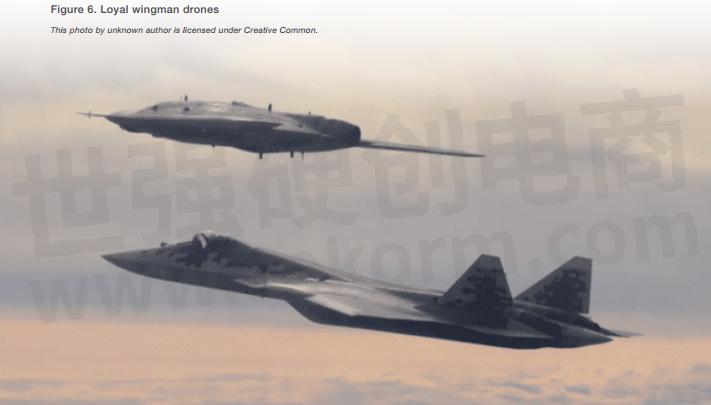
The Air Force established an office within the Air Force Research Laboratory called AFWERX. Its goals include fostering a culture of innovation and connecting innovators across government, industry, and academia. One AFWERX program, Agility Prime, aims to help “accelerate the commercial market for advanced air mobility vehicles.” To achieve this, the Air Force intends to leverage test infrastructure and certification authorities and establish revenue-generating use cases. Many companies involved in the race to the top of the commercial eVTOL market take part in this Air Force program.
In Europe, the German company Flensburger Fahrzeugbau Gesellschaft is developing an eight-wheeled armored vehicle technology demonstrator called Genesis. Powered by hybrid diesel-electric propulsion, this vehicle uses a diesel internal combustion engine to drive a generator that produces energy for the electric motor. Using pure electric drive, its range at 40 km/h should be about 150 kilometers. The diesel-electric drive operating at 60 km/h should have a range of around 600 kilometers. When necessary, a 200-kilowatt six-cylinder diesel engine is used to recharge the batteries.
The US Army also wants to reduce reliance on fossil fuels and increase battlefield mobility by investing in electric wheeled and tracked ground vehicles. One initiative under consideration is an electric light reconnaissance vehicle. The Army hopes to realize tactical and operational benefits from such a vehicle and may begin development soon. Fully electric combat vehicles that could replace today’s M1 Abrams tank and M2 Bradley fighting vehicle may be some time off. Still, smaller robotic combat vehicles such as those shown in Figure 7 are under development. Those vehicles can move ahead of ground forces to see what’s out there, identify obstacles, and partner with humans to determine the best course of action.

The US Army also funded the development of unmanned vehicles that operate in partially manned convoys, referred to as leader-follower configurations. Leader-follower reduces risk to warfighters by allowing a single manned vehicle to lead a convoy of one or more unmanned follower vehicles.
Beyond the vehicles themselves, the defense industry is investing in the infrastructure necessary to enable their use. In an era of electric-powered vehicles, ensuring constant readiness of battlefield resources is a major concern requiring an assured charging infrastructure in sometimes remote and austere settings. The ideal infrastructure cannot depend too much on nonmilitary resources, which face potential disruption in a time of conflict. To address these challenges, the US Army has formed a Power Transfer Cohort to identify and explore technologies supporting its move to EVs. The program is assessing options related to the following:
• rapid recharging for Army EVs
• transportable power for EV recharging
• scalable infrastructure for EVs and other systems
• integration of new EV infrastructure and the Army’s legacy infrastructure
These examples represent a few of the many aerospace and defense initiatives aimed at realizing the benefits of electrification. Achieving the vision of manned/unmanned aircraft operating cohesively will require advances in autonomous flight technologies. In addition, broad electrification of ground, airborne, and marine vehicles and deployment of the necessary infrastructure will require advances in energy storage technology.
Test and Measurement Implications
Introducing electric and autonomous vehicles and the necessary infrastructure will require extensive coordination between government authorities, defense agencies, and corporations. Commercial regulators must develop stringent certification requirements. Defense organizations must apply the same rigor to military platforms. In addition to ensuring safety, newly established standards must allow for the interoperability of systems and subsystems. The test and measurement industry has a central role to play, collaborating with stakeholders and devising necessary test solutions to enable broad deployment of the associated technologies.
To realize its goals, the aerospace and defense industry is relying on further advancements in the technologies shown in Figure 8 and listed below:
• safe and cost-effective autonomous vehicle technologies
• battery energy-density improvements
• compatible charging protocols and standards

Advances in autonomous vehicle technologies must allow for safe, cost-effective, and pilotless air taxis to make this a viable business. These advances will also extend the military’s ability to project force using unmanned air, ground, and marine vehicles. Militaries and commercial air mobility systems will need compatible charging protocols and standards. Improvements in battery energy density are needed to make possible fully electric aircraft and heavily armored vehicles. The test and measurement industry must work to enable these advancements by developing necessary test solutions.
Autonomous vehicles use sensors and communication interfaces to provide data on the surrounding environment to onboard perception and planning software. That software interprets this data, makes decisions, and works with control systems to manage vehicle movement.
Military ground vehicles, for instance, may use cameras with advanced graphical image processing software to perceive their environment. Using artificial intelligence (AI) techniques, algorithms then determine a course of action in response to this and other sensor inputs. 2 The computational intensiveness of these algorithms and associated sensor systems poses a challenge for vehicle developers because of the ever-increasing amounts of onboard computational power required. To address this trend, organizations are researching the use of quantum computing platforms and other options.
The use of AI allows these vehicles to learn from experience. The algorithm’s learning nature allows future decision-making to account for outcomes of prior decisions. However, that same learning nature violates basic premises upon which traditional stimulus-response testing is based. Responses of an AI system to a given stimulus may change over time as it learns more about outcomes. Past parametric test techniques will prove insufficient and test methodologies must improve to ensure the readiness of this new generation of vehicles.
You can imagine an infinite number of scenarios to which a vehicle will have to autonomously react. Picture sensors relaying information on a pedestrian with a dog crossing a street in front of the vehicle. Perhaps the vehicle interprets the information and decides it is moving too rapidly to stop in time. To avoid the pedestrian, it changes direction. Now, imagine the dog separates and runs in front of the vehicle’s new path. How can you create solutions that test a vehicle’s response to all possible scenarios?
Testing large numbers of scenarios on ranges outfitted with full-size objects is both time-consuming and cost-prohibitive. The industry needs solutions that can simulate large numbers of environmental scenarios in a cost-effective manner. Those solutions must simultaneously simulate the dimensions, relative location, and motion of multiple objects while generating communication signals such as dedicated short-range vehicle-to-everything (V2X) and cellular V2X. Testing autonomous aircraft will require simulating objects in all three dimensions, with this 360-degree view of the environment having implications to test system compute power. Solutions must also enable rapid scenario changes to reduce test time and minimize the cost of tests.
Figure 9 displays the functional elements of an electric automobile. Elements include charging, energy storage, and power conversion technology. Although specific implementations may differ, these same elements comprise electric-powered military ground, airborne, and surface-subsurface vehicles.
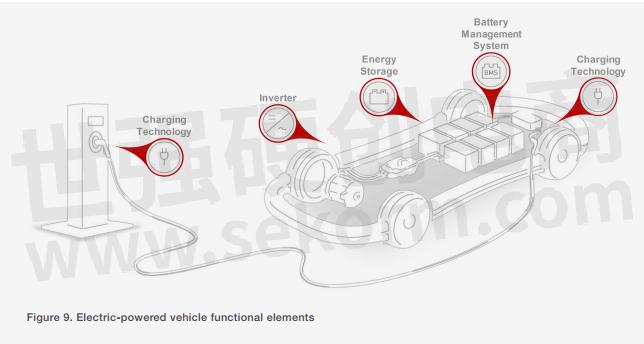
The test and measurement industry must support companies involved in developing and manufacturing these functional elements and the vehicles using them. Advancements in two related areas are critical to achieving aerospace and defense industry goals. They are improvements in the energy density of batteries and the need for compatible charging standards.
By some estimates, all-electric medium-range passenger aircraft will demand energy densities of 400 Wh/kg to reach commercial viability. Improving the energy density of batteries may require new chemistries. The test and measurement industry must devise solutions that provide advanced insights into the attributes of resulting batteries. These insights can allow commercial aerospace companies to gain competitive advantages by selecting battery chemistries or sorting battery cells to maximize desired vehicle performance characteristics.
Militaries will need to understand the characteristics of battery performance under a broad range of use cases. For example, militaries may use batteries to both powers a vehicle and as ancillary power for forward-deployed facilities. Understanding the performance of different battery chemistries under repeated (bidirectional) charging and discharging scenarios provides key insights for this use case.
For aerospace and defense, ensuring compatible charging standards is critical. The business viability of air taxi service relies on the ability to predictably recharge electric aircraft at newly established vertiports. To ensure the readiness of battlefield resources in geographically disparate and often remote areas, militaries must institute compatible communication and power-transfer protocols for their vehicles. The test and measurement industry must collaborate on devising standards and developing the necessary test solutions.
To verify compatibility, the industry needs solutions that emulate the charging station and vehicle charging interface. To test a vehicle charging interface, test systems must emulate the charging station, adhering to the protocols of a given standard, and determine how the device under test (in this case, the vehicle-charging interface) responds. Similarly, to test a charging station, the system must emulate a vehicle-charging interface adhering to the standard and measure how the charging station responds.
Ideally, systems that perform standards verification of this sort will also support testing of nonstandard scenarios. Here, charging implementations do not adhere perfectly to the chosen standard but operate in a somewhat nonstandard fashion. Such is the case, for instance, if power transfer or communication links are “noisy” in some way.
EV charging infrastructure and powertrain component tests carry inherent dangers because of the high-power nature of these devices. As such, the safety of the test system itself is paramount. During battery temperature testing, a thermal runaway may cause the release of flammable gases into the test environment. Environmental chambers that subject batteries to low and high temperatures provide an important containment measure for such an event.
In addition to ensuring safety, solutions must be cost-effective for organizations involved at different levels of the electrification hierarchy or in different phases of system or component life cycles. Ideally, the test and measurement industry will develop modular, scalable, and cost-effective solutions that support the needs of organizations involved in designing and manufacturing these new technologies while adhering to the highest safety standards.
The Road Ahead
Technology evolution and the increasing impacts of climate change are driving investment in future transportation networks that maximize freedom of mobility and minimize carbon footprint. Advanced air mobility systems will create a modern mobility paradigm wherein highly automated aircraft transport passengers and cargo between newly established vertiports. On-demand air taxi and package delivery services will become commonplace, providing additional choices for consumers.
Today's militaries are investing to reduce the constraints of legacy supply chains and enable deployment on short notice to any geographic locale. A new approach to air dominance will minimize risk to pilots by developing a family of layered, unmanned air vehicles operating in coordination with fewer manned aircraft. Electric-powered and autonomous surface and subsurface vehicles will provide enhanced operational awareness across the world’s oceans. Electric-powered ground vehicles will help reduce fossil fuel consumption while providing tactical and operational benefits. These commercial aerospace and defense solutions will provide greatly enhanced capabilities while minimizing impacts on our climate.

The initiatives described here reflect a concerted effort by the aerospace and defense community to realize the goals of ensuring sustainable commercial aviation along with capable and agile militaries. Success points to a future that ensures national security with a defense infrastructure-less reliant on fossil fuels. This future, as depicted in Figure 10, will also support advanced air mobility systems that ease congestion and pollution in urban areas.
Transportation systems and vehicles, by the nature of their precious cargo, cannot fail. Ensuring their performance in real-world situations requires a broad spectrum of end-to-end test solutions. To help ensure this future of increased choices for individuals and more secure society for all, the test and measurement industry must apply its resources to enable the necessary advances and successful introduction of these new and evolving technologies.
- +1 Like
- Add to Favorites
Recommend
- Keysight Technologies Acquires Quantum Benchmar, Augmenting Keysight‘s Quantum Portfolio
- Keysight First to Gain OmniAir Qualified Test Equipment Status, Accelerating C-V2X Device Certification
- Keysight First to Gain GCF Approval of Cases for Validating 5G New Radio mmWave Devices in Standalone Mode
- Keysight Massively Parallel Board Test System Selected by LACROIX in Automotive Printed Circuit Board Manufacturing
- Keysight, TIM and JMA Wireless Join Forces to Showcase O-RAN Technology at Mobile World Congress 2021
- Keysight, Xilinx and Cisco Showcase Solutions that Support Smooth Migration from 4G LTE Networks to 5G Open RAN
- Keysight Unveils the First Media Access Control Security Test Solution for High Speed Ethernet
- Keysight, MediaTek Join Forces to Establish 5G Connectivity Based on 3GPP Release 16 Specifications
This document is provided by Sekorm Platform for VIP exclusive service. The copyright is owned by Sekorm. Without authorization, any medias, websites or individual are not allowed to reprint. When authorizing the reprint, the link of www.sekorm.com must be indicated.



























































































































































































































































































































































































































































































































































































































































































































































































































